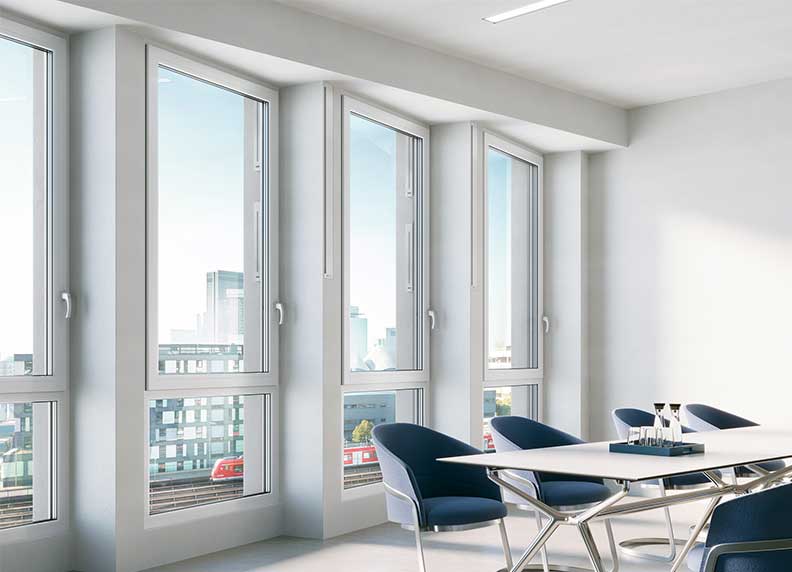Facade ventilation in a class of its own – or in short: the new AEROMAT VT from SIEGENIA
Innovative optimisation with a bundle of benefits
Easier planning, simpler assembly, more room comfort thanks to new high-performance features: the new AEROMAT VT from SIEGENIA combines controlled ventilation with high added value for architects, planners, fabricators and end users. Newly developed from scratch, the system solution of passive vent, supply air or exhaust air variants and extending to two versions with heat recovery cover the complete spectrum of decentralised ventilation systems. This makes it unique, as do the freely combinable individual ventilator types, which enable the achievement of complete solutions in a uniform design. The attractive appearance is supported by different possibilities for discreet integration in the facade. The additional special features of the new AEROMAT VT system include its outstanding sound absorption and its high air throughput.
Facade ventilation - 360° forward-thinking
SIEGENIA has been consistently forward-thinking on the topic of facade ventilation throughout the entire development of its tried and tested vent unit. This begins with the universal platform of covers that facilitates favourable integration into the building shell more than ever. Variable in length and depth, it enables the use of a wide range of ventilator designs with an identical appearance. The harmonious design of the facade is supported by the unobtrusive integration of the ventilation unit into the reveal, wall or lintel. The installation can either be visible or concealed – this also provides a maximum degree of flexibility.
The extensive accessories with variants for installation via reveal, lintel or wall duct offer significant benefits for architects, planners and fabricators. Made from easy-to-assemble EPP material, they guarantee tangible structural advantages and create the best prerequisites for easy, demand-based cropping as well as the simple compensation of structural tolerances.
Efficient heat recovery – maximum energy efficiency
With its extensive equipment options the AEROMAT VT fulfils the highest demands of room comfort. Especially convincing from the perspective of architects is the possibility of equipment with heat recovery that is eligible for funding and the extension of the system family to include a new variant: as an alternative to the AEROMAT VT WRG with its outstanding heat recovery of up to 93 % and its balance of size, inherent noise and energy efficiency, a new version with energy efficiency class A at a heat recovery rate of up to 95 % is now available to you. This makes the new AEROMAT VT WRG plus into an overall efficient solution for energy efficiency and sustainability. Architects and planners can also benefit from the diversity of the AEROMAT VT D, the passive vent version. Available in different variants, it meets the widest range of requirements with regard to the ratio of sound absorption to air throughput.
The modern, convenient operation of the AEROMAT VT offers end users an enhanced degree of room comfort. They can choose between modern operation via touch, smart control via app and independent, demand-based automatic ventilation. The optional performance features of the facade ventilator also provide a good indoor environment all the time – from temperature, humidity, CO2- and VOC-based control and additional functions like a preheating element up to different filter grades.
Easy configuration
The benefits of the new AEROMAT VT are rounded off by tangible benefits for fabricators. For example, all installation and equipment options can be configured easily and conveniently via the SIEGENIA online shop. Partners of SIEGENIA also receive consultation and support, e.g. in the form of individual assembly suggestions, for their project-specific planning. The well-conceived design of the vent unit also creates benefits for fabricators during installation because it can be installed beside the window element independent of profile. Preconfigured inputs and outputs also enable external control of the vent unit as well as direct integration into the building control system.


